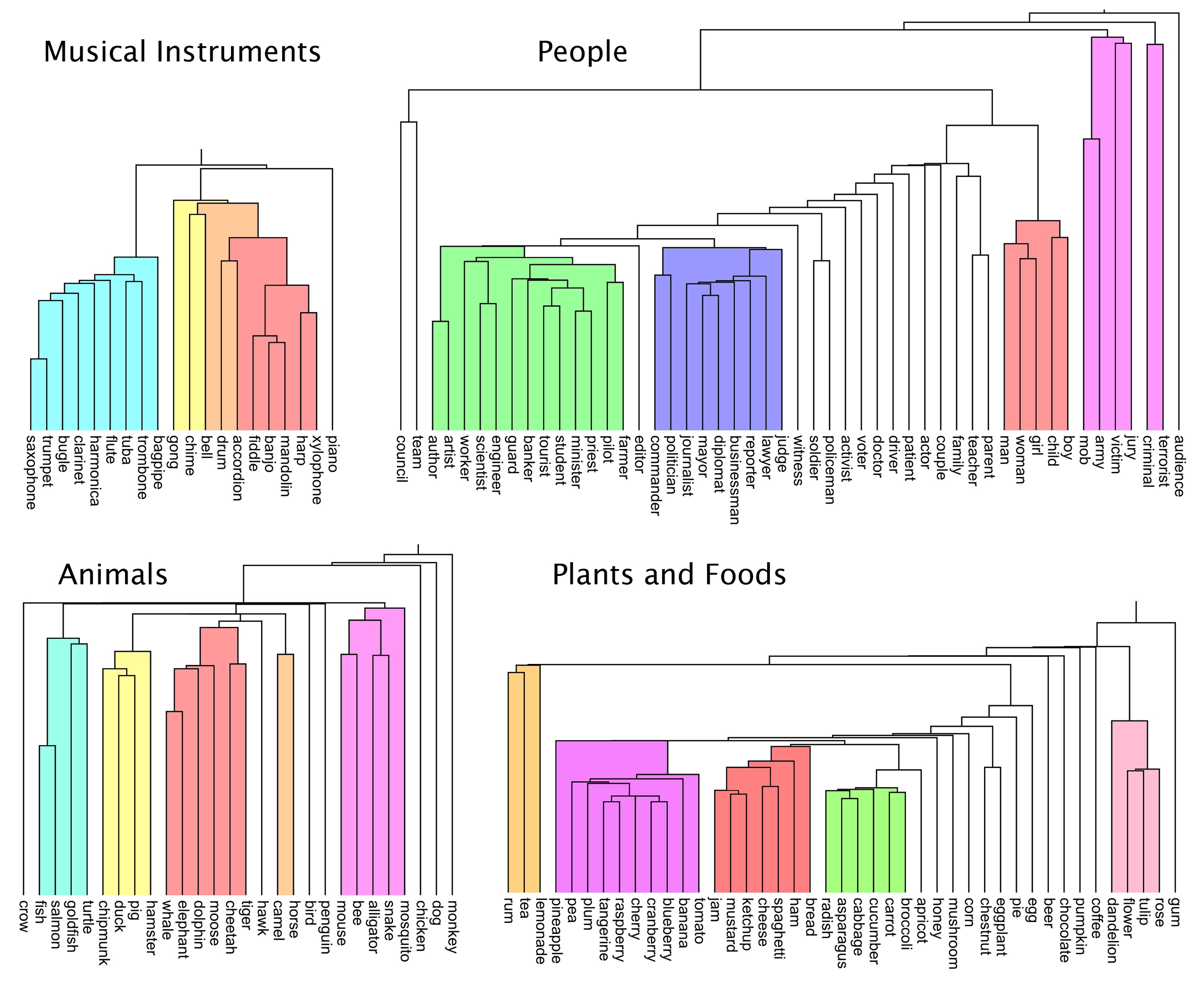Concept Representation in the Human Brain
Funding source: NIDCD R01 DC016622 (Binder, PI)
Concepts are the building blocks of human cognition, providing the basic content for language, episodic memory, social interaction, planning, and other essential capabilities. Modern evidence suggests that human conceptual knowledge is represented in a widely distributed and hierarchically organized system involving much of the brain. Despite the central importance of this cognitive domain, there are large gaps in our understanding of very fundamental issues concerning how concepts are represented and organized at a systems level. This project addresses several of these gaps using a novel, high-dimensional, biologically based model of word meaning (Binder et al., 2016) that captures the extent to which a concept is derived from various types of sensory, action, emotional, spatial, temporal, and cognitive experiences. We use this model in a series of information-based analyses of fMRI data and multivariate analyses of lesion-deficit correlations in patients with stroke. Our main hypothesis is that much of conceptual knowledge is represented in abstract form within content-specific experiential networks and multi-level convergences between these networks.
Aim 1 is to clarify the architecture of these hierarchical convergences, including intermediate crossmodal networks that we hypothesize arise in the brain due to proximity of neural processing streams and systematic covariation between experiential dimensions. Aim 2 is to test the hypothesis that event concepts (e.g., party, accident, sneeze) are primarily represented in inferior parietal convergence networks due to strong contributions from motion, action, spatial, and temporal experiences in the formation of these concepts, whereas object concepts have stronger representation in temporal lobe convergence networks that capture static multisensory experiences. Aim 3 is to clarify how concept categories are differentially represented and how this organization gives rise to category-related impairments in patients with focal brain damage. We hypothesize that neural representations of both concrete and abstract categories emerge from differently weighted mixtures of experiential information at high levels in the representational hierarchy.
The high-dimensional, experiential representation of word meaning on which these hypotheses are based, combined with advanced fMRI techniques for mapping information content, makes it possible to address these basic knowledge gaps systematically for the first time. Combining lesion-deficit correlation analyses with these healthy brain fMRI studies provides a powerful means of establishing causal links between fMRI activity patterns and successful concept retrieval. Understanding this large, complex, and particularly human brain system has important implications for understanding a range of neurological conditions that impair knowledge representation and retrieval, will have relevance in functional mapping for brain surgery, and will be a prerequisite for developing rational and effective rehabilitation strategies for such patients.
Relevant Publications
- Anderson AJ, Binder JR, Fernandino L, Humphries CJ, Conant LL, Aguilar M, Wang X, Doko D, Raizada RDS. Predicting neural activity patterns associated with sentences using a neurobiologically motivated model of semantic representation. Cerebral Cortex, 2017; 27: 4379-4385
- Binder JR, Conant LL, Humphries CJ, Fernandino L, Simons SB, Aguilar M, Desai RH. Toward a brain-based componential semantic representation. Cognitive Neuropsychology, 2016; 33: 130-174.
- Fernandino L, Binder JR, Desai RH, Pendl SL, Humphries CJ, Gross W, Conant LL, Seidenberg MS. Concept representation reflects multimodal abstraction: A framework for embodied semantics. Cerebral Cortex, 2016; 26: 2018-2034.




